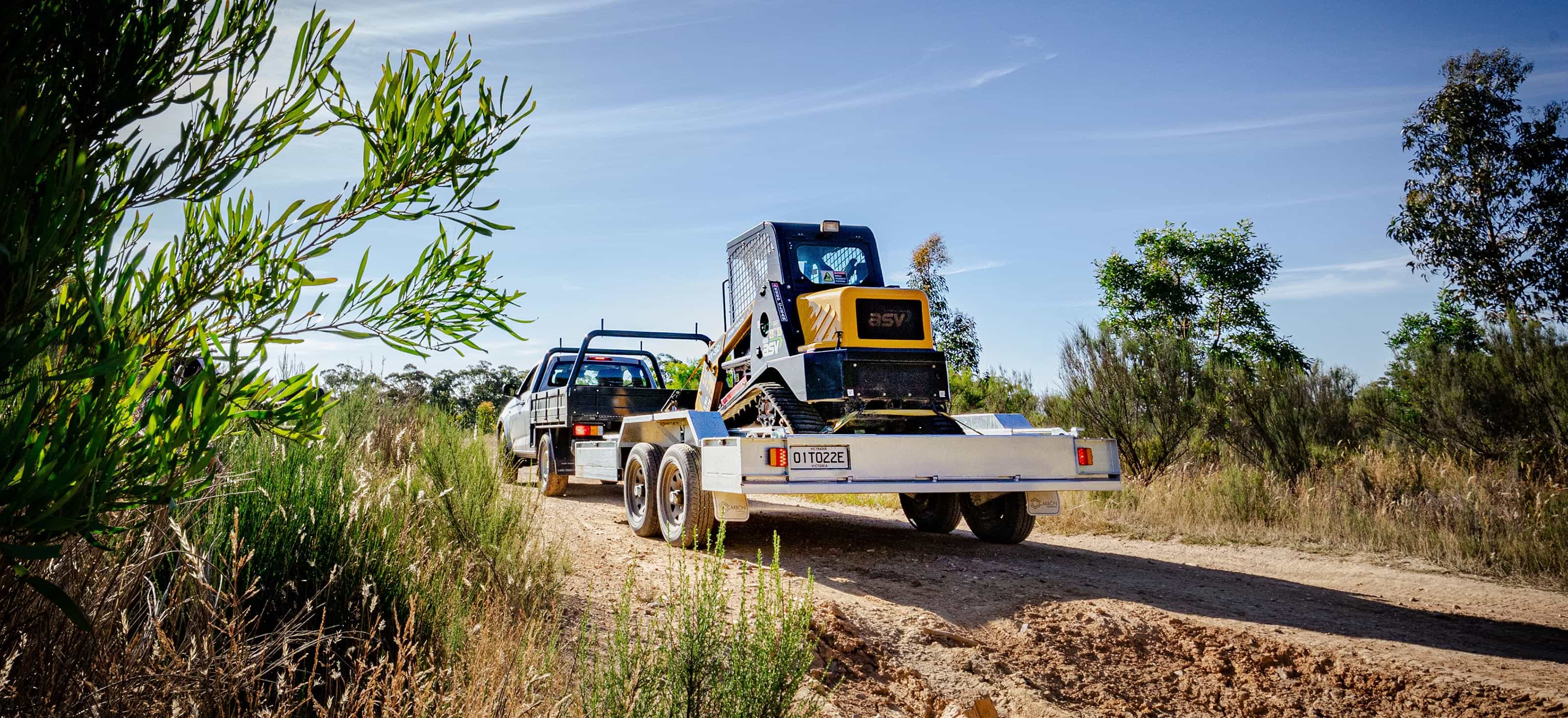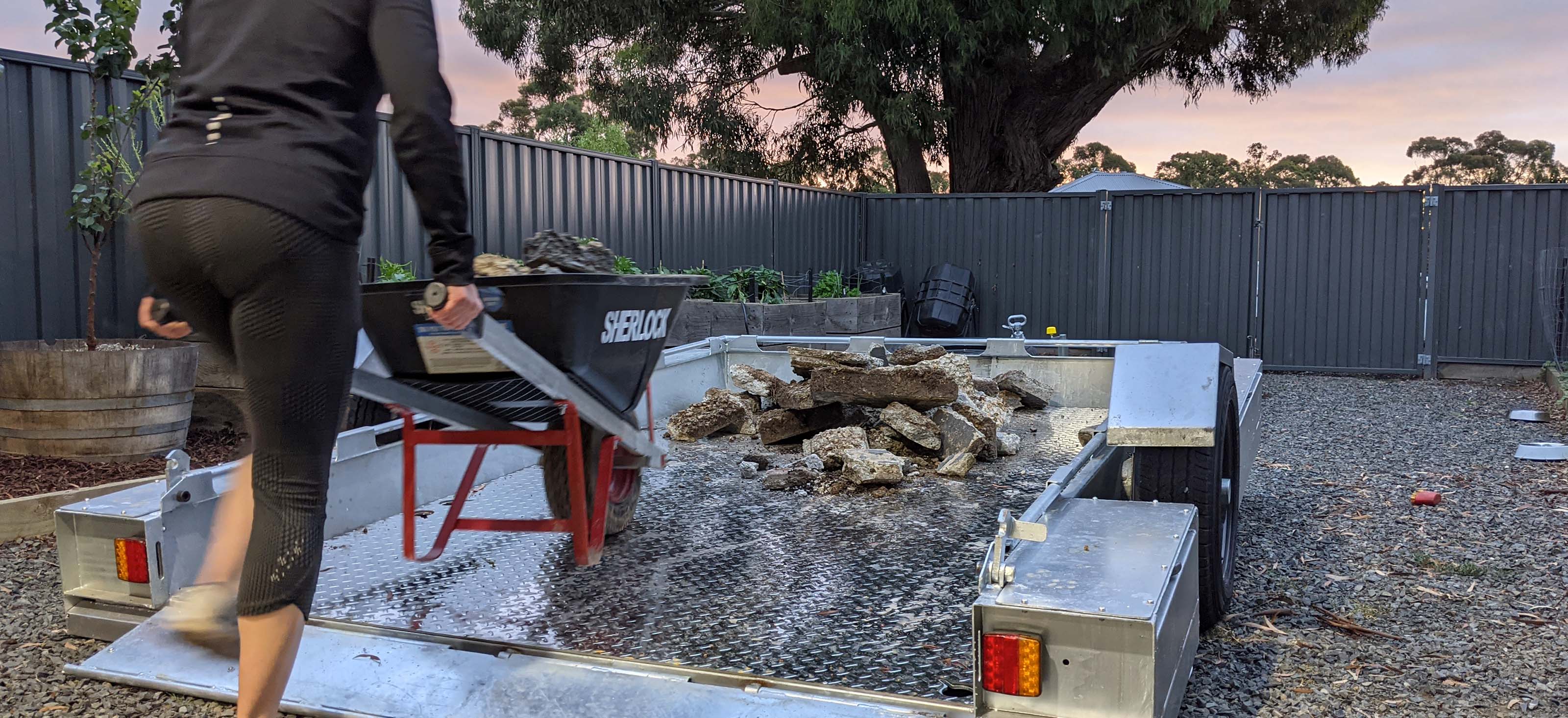Single versus tandem axle trailers
A single axle or tandem axle is one of the most important factors in choosing a new trailer, substantially impacting many factors including cost, weight, capacity and stability both on and off-road.
The first factor worth considering is that tandem axle trailers are significantly more expensive than single axle trailers. There are twice as many axles, springs, brakes, wheels and tyres which all share a significant cost of a new trailer.
These additional costs also continue into ownership when servicing your trailer, again since there are twice as many wear parts to replace like brake pads and tyres, although they do have a bit longer life span. Tandem axle trailers also typically don’t use mechanical override brakes (unless they only have front brakes) so there are additional costs associated with hydraulic or electric brakes.

There are advantages to tandem axle trailers though which make them worth the additional cost over single axle trailers for many users. Firstly the load-carrying capacity of a tandem trailer is generally much higher, the weight on each wheel, axle and spring is half that of an equivalent single axle trailer, and there is also twice the braking power since there are double the brakes and more tyres for traction. This is why tandem axle trailers are the only option for trailers with an ATM of 3,000kg or more. Tandem axle trailers do have a higher tare weight though, which does detract slightly from the extra payload.
Tandem axles also have the ability to load share between the front and rear axles, although for many tandem trailers this isn’t standard. This is a very important feature and all Carbon Equipment tandem trailers have load sharing suspension, on leaf springs this is commonly known as rocker-roller.
Load sharing means that the front and rear axles balance against each other like a see-saw (also known as a walking beam axle in its simplest form) so that both axles always share 50% of the load applied. When passing over bumps as the front wheel is pushed up, the load sharing simultaneously pushes down on the rear wheel which raises the trailer slightly before the rear wheel reaches the bump.
This spreads out the time it takes for the trailer to react to the bump, reducing the acceleration or force experienced by the trailer itself. This is the primary reason that tandem trailers are typically much smoother than single axle trailers on the road. There is one caveat though, on most trailers, the load sharing is limited to a small amount of articulation between the front and rear wheels. This limit is rarely reached on road, but in very rough off-road situations the suspension may reach this limit and lift wheels entirely off the ground and place a much greater load on the remaining wheels.
Since single axle trailers have only 3 points of contact (both wheels and the coupling), the suspension is only used to absorb bumps and is not used as articulation off-road, so they can be towed through much rougher terrain. Carbon Equipment’s hydropneumatic suspension system is one of the few exceptions to this rule, since the suspension system allows for a much larger articulation the limits to this is rarely reached even in extreme off-road situations.
Another disadvantage to tandem axle trailers is the distance between the front and rear tyre contact patches. When turning sharply, a single axle trailer is free to turn as the wheels spin at different speeds to account for the different turning radius. On a tandem axle trailer though, the front and back wheels must slide in order to follow a radius. This is most prominent when trying to move a trailer by hand.
Single axle trailers are easy to turn by hand, whereas tandem axle trailers are very difficult to push anywhere but a straight line. This can be handy for getting trailers into tight spots where a vehicle doesn’t fit, but the same thing happens when towing and reversing trailers. Tandem axle trailers have increased side loading on the axles and bearings, as well as increased tyre wear and will often leave marks on ground surfaces when turned sharply.

With all these factors considered, Carbon Equipment generally recommends single axle trailers for lighter weight trailers (below 2,000kg) where the advantages of load sharing and additional brakes aren’t as important, and tandem axles for larger trailers (above 2,000kg) where the reduced suspension force and additional braking requirements are much more beneficial.
If you intend to take your trailer into more extreme off-road situations, it is best to reduce weight as much as possible regardless of axle type and if possible to stay below the weight limits of single axle suspension. Otherwise, if high weight carrying capacity and large off-road articulation is necessary more advanced tandem options such as hydropneumatic suspension will be required.